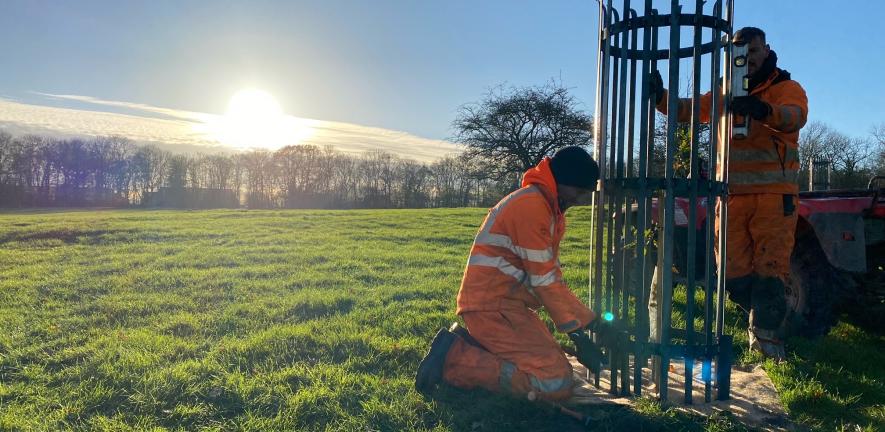
The University of Cambridge restored dozens of native trees to a Capability Brown landscape on its estate this month as part of Cambridge’s contribution to the late Queen Elizabeth II’s Platinum Jubilee ambition to plant a million trees across the United Kingdom.
The University of Cambridge restored dozens of native trees to a Capability Brown landscape on its estate this month as part of Cambridge’s contribution to the late Queen Elizabeth II’s Platinum Jubilee ambition to plant a million trees across the United Kingdom.
"The planting allows us to restore Capability Brown’s vision for Madingley Park and create a living legacy to Her Majesty Queen Elizabeth.”
Dr Anthony Freeling, Acting Vice-Chancellor
The 58 trees were planted in December as part of the Queen’s Green Canopy initiative at the Grade II listed Madingley Park, just outside of Cambridge, which is home to the University’s 16th-century Madingley Hall conference centre and the Institute of Continuing Education (ICE).
The trees are a mix of native species, including beech, lime, London plane and oak and are protected by metal guards that reflect the existing railing at Madingley Park, which was landscaped by Capability Brown 266 years ago and is now used by the University Farm for grazing sheep and cattle.
Over the years, many of the parkland trees that were planted have inevitably been lost. This new planting is part of the University’s Biodiversity Action Plan and the University Farm's Higher Level Stewardship agreement and aims to replace these lost trees, guided by thinking on the most likely original planting scheme. There are no plans dating from the period.
Dr Anthony Freeling, Acting Vice-Chancellor, said: “The University of Cambridge is proud to support the Queen’s Green Canopy. The planting allows us to restore Capability Brown’s vision for Madingley Park and create a living legacy to Her Majesty Queen Elizabeth.”
The trees were planted in early winter to give them the best chance of getting established during 2023, after what has been a very dry year.
The planting at Madingley Park will be included on the interactive map created by The Queen’s Green Canopy to showcase the planting projects across the United Kingdom.

The text in this work is licensed under a Creative Commons Attribution 4.0 International License. Images, including our videos, are Copyright ©University of Cambridge and licensors/contributors as identified. All rights reserved. We make our image and video content available in a number of ways – as here, on our main website under its Terms and conditions, and on a range of channels including social media that permit your use and sharing of our content under their respective Terms.
